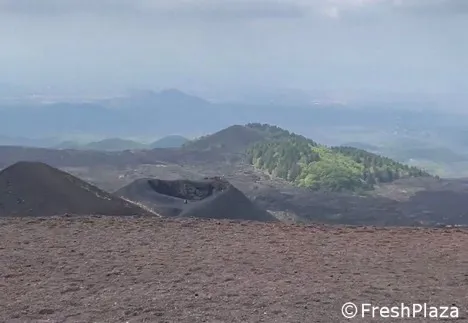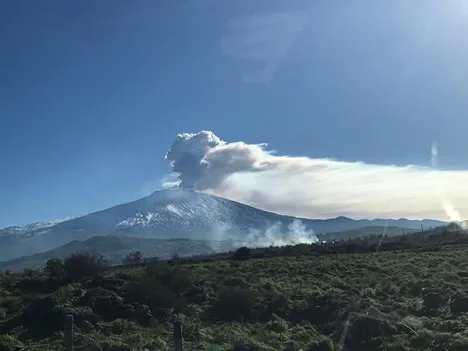According to a CNR study just published in JSFA Reports (see link at the bottom), volcanic ash is a multi-nutrient inorganic fertilizer whose catalytic mechanism of action integrates the required trace metals for bacterial enzymes to both fix and make available to plants those vital elements such as nitrogen, carbon, phosphorus, sulfur and other purely important ones. It is the catalytic mechanism that makes it possible to use relatively small amounts of volcanic ash to fertilize large areas of soil.
 Above, one of Etna's craters
Above, one of Etna's craters
Demonstrated primarily during the 2010s in Russian Kamchatka and Indonesia, two areas of the world that are home to highly active volcanoes, such findings remain relatively unacknowledged. We spoke with the authors of the study, a team coordinated by Mario Pagliaro at CNR that includes a former German school teacher of Sicilian descent, Giuseppe Tizza, who has been interested in the fertilizing properties of lava ash for years.
In short, volcanic ash available in overabundance can be used as an agricultural fertilizer on a large scale. "This is," explained the researchers, "a significant opportunity for socioeconomic and environmental development, whether for farmers, for populations living near active volcanoes, or for more remote populations where lava ash can be easily transported using the same logistics chains that ensure the distribution of normal chemical and organic fertilizers.
 Etna
Etna
The study also provides a unified picture that includes a preliminary economic analysis. Even today, in Sicily, Etna's eruptions represented a serious economic cost for the territories reached by volcanic ash fallout. Indeed, the ash must be removed from the built environment, including roads and squares. The cost is so high that municipalities cannot cope with it, but need the intervention of the region each time, which spends many millions to collect and then store ash from roads, sidewalks and squares.
"By making ash available to agricultural enterprises," clarified Pagliaro, "volcanic ash will become a valuable resource capable of providing even crops that are far from Etna with those characteristics of the crops that grow in Etna's soils.
However, for this to happen, the Sicilian Region will have to adopt a regional law regulating the harvesting and use of lava ash as an inorganic fertilizer. "When the regional parliament will want it," concluded Pagliaro, "we will describe in a hearing how to articulate this regional law, to the benefit of the entire agricultural production system of Sicily and the rest of Italy.
For more information:
mario.pagliaro@cnr.it
http://www.qualitas1998.net/pagliaro/jsf2.87.pdf
